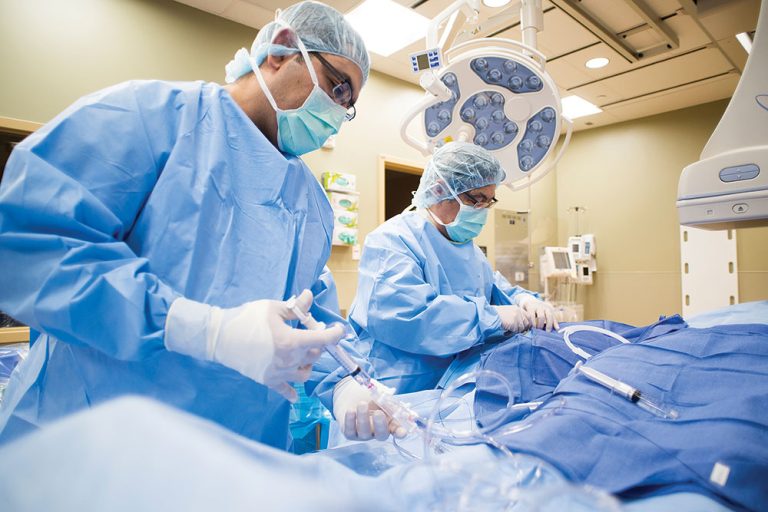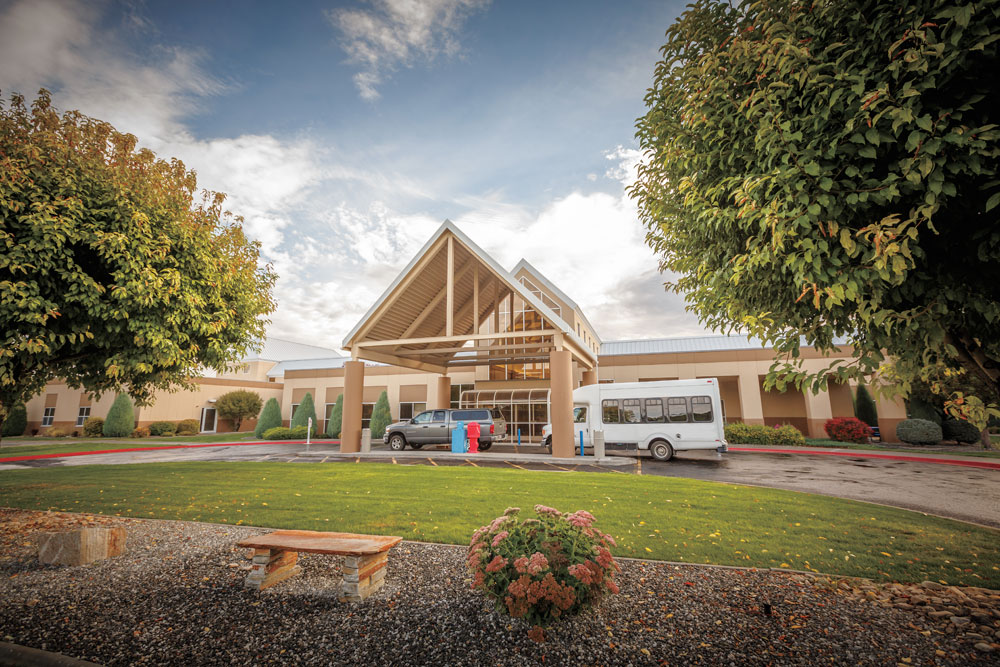Southern Idaho Provides Patients Peace of Mind
Area residents have access to top-notch health care services.

From spinal surgery to at-home patient care to emergency medical air transport, Southern Idaho residents have access to high-quality health care close to home.
In This Article
St. Luke’s Magic Valley Medical Center
Reaching out into the communities to provide health care is a focus of St. Luke’s Magic Valley Medical Center. The Community Health Emergency Medical Service (CHEMS) model is putting that goal into practice.
CHEMS incorporates emergency medical services responders into the general health care delivery system. A key element allows EMS staff to provide continued follow-up care that can prevent unnecessary readmissions. The types of concerns that can be addressed at home include transitional care, vaccinations, medication inventories, resource coordination and basic medical practices.
CHEMS brings the skill and expertise of paramedics and emergency medical technicians to increase access to care and extend the reach of primary care into a patient’s environment,” says James Rhom, St. Luke’s EMS community health supervisor. “Community paramedics and EMTs work as a guide to help patients navigate health issues and barriers to provide the best care possible.”
Meanwhile, Air St. Luke’s opens access to specialized emergency care across the region. With professionals highly trained to the specific needs of newborns, pregnant women, children and adult patients with cardiac or other critical needs, Air St. Luke’s is the region’s most comprehensive medical transportation program, operating as mobile critical care units with advanced lifesaving equipment and technology.

Cassia Regional Medical Center
Cassia Regional Medical Center gives Mini-Cassia a hospital that is part of the world-class system, Intermountain Healthcare, providing access to advanced telemedicine technology that connects patients with Intermountain Healthcare experts, reducing costs and keeping patients close to home whenever possible.
“We provide a wide breadth of medical services to the Mini-Cassia area,” says Brad Reynolds, ancillary services and physician clinics director. “Most importantly, we are here to deliver babies and respond to medical emergencies when our friends, family and neighbors need us the most. We are proud to be a certified STEMI Level II and Stroke Level III center.”
Approximately 600 babies are delivered each year at Cassia Regional. Other inpatient services include a six-bed ICU, 19-bed Medical/Surgical unit and four operating rooms. Surgical services include trauma, general, minimally invasive, orthopedics, foot and ankle, gynecological and ENT. Outpatient services include medical imaging, chemotherapy, respiratory, and physical, occupational, speech and pediatric therapy.
North Canyon Medical Center
An independent hospital serving the community for more than 100 years, North Canyon Medical Center continues to expand services and locations in the Magic Valley.
“Our role is to be a trusted partner in helping our communities live healthy lives,” says CEO J’Dee Adams. “We offer a breadth of services through our clinics and hospital to ensure patients can be seen by physicians in days, not weeks. We are a small, independent community hospital, striving to be the trusted partner, as our community navigates any health challenge. We have partnered with Mayo Clinic to bring world-renowned health care to the people in the Magic Valley.”
Minidoka Memorial Hospital
Patients are at the center of every decision made at Minidoka Memorial Hospital, says CEO Tom Murphy.
“As we look at the growth of new services, equipment purchases, expanded surgical services, we are focusing on keeping people local instead of having to travel for that specialty treatment or surgical care,” he says.
Minidoka’s investment in a $1 million new robotic arm to assist surgeons with knee and hip replacements is an example of providing high-quality services on a local level.
The hospital’s spine program is another example. Spine patients in the region no longer have to travel to Salt Lake or Idaho Falls for treatment. “The community has gotten behind this program and benefited from it,” Murphy says.
Recently, Minidoka brought an ear, nose and throat (ENT) surgeon into the community.
“A lot of the patients are children, and traveling out of town for appointments puts stress on working parents,” Murphy says. “We are thrilled we can provide that service locally.”
If you’d like to learn more about the Southern Idaho area, check out the latest edition of Livability: Southern Idaho.



